
Art History: Henri Fuseli Romanticism Painter
Subscribe to our Newsletter for more artworks and coupons
Henry Fuseli is quite the interesting artist. He was active as an artist between 1750s and 1820s. His style is that of Romanticism. For those that do not know (or care) romanticism came about as a challenge to the Enlightenment. While the Enlighten noblemen where thinking that peace and prosperity laid inside the fumes of an industrial factory waste pipe the Romantics where thinking "yeah right". They hated how materialistic the world had become. Fuseli is of this lot. it is for this reason that his art is so fantastic, so bizarre. Like monsters out of a nightmare. His innovations made him the most feared artist of his time. His work brought many erudite to his senses. Anyhow, without further ado here some interesting.
Hamlet, Horatio, Marcellus and the Ghost
Shakespeare is a common theme in the art of Fuseli. The first image shows The Ghost of Hamlet's father. He looks really epic in pose and function. The only source of light emanates from him. Here he is asking his son to avenge his death. We all know how that story of vengeance ended. Just like all the rest, every one dies The END.
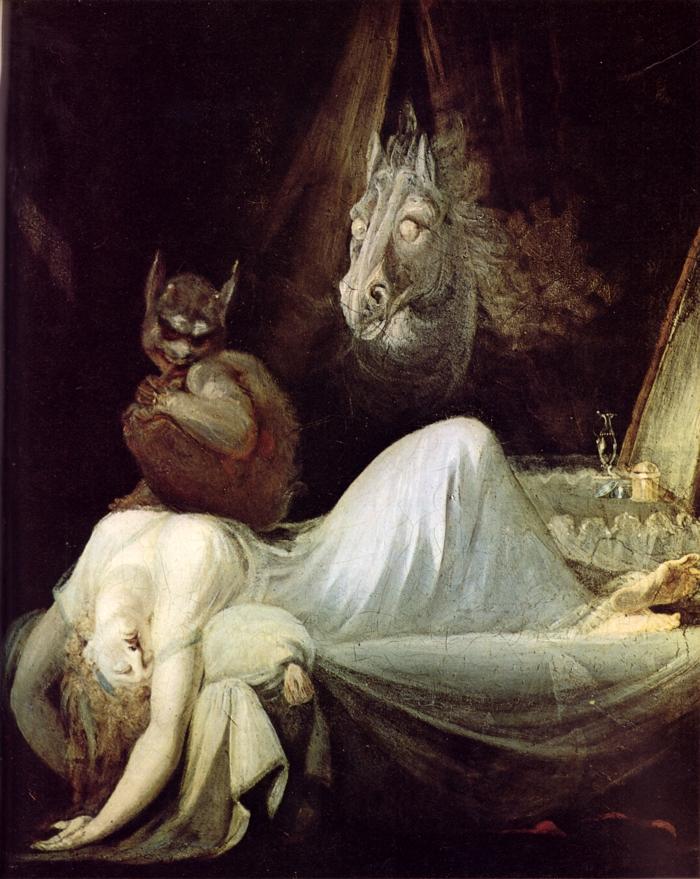
The nightmare Version 1
A Proper name for this painting. Here we see a horse and fairy. During those days it was believed that evil manifested in the forms of animals. The dual nature of the horse makes it perfect for a Nightmare. In a regular dream he appears as a graceful animal. A perfect symbol of manliness. Seeing that this is a nightmare of a woman perhaps Fuseli seems to imply that there is a man in the life of this woman that is oppressing her. She might fear that at any moment he might go berserk on her. This is further reinforced by the male fairy. He too has a dual nature. At times male fairies are graceful but here he is crude monster. It is interesting how the male fairy looks at the viewer. What could it mean?
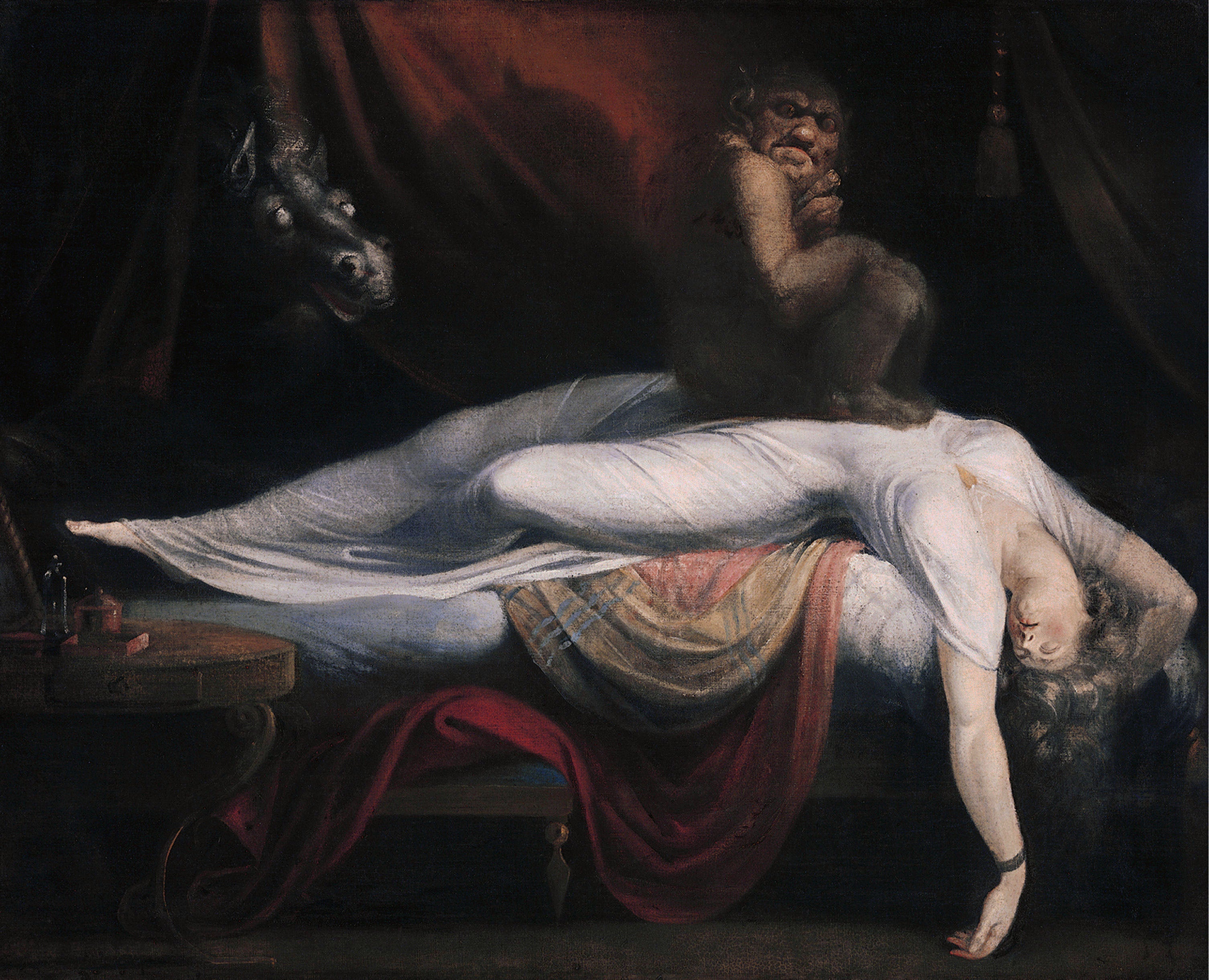
The nightmare 1790-91
In version 2 all the attention of the monsters seems to be the woman. It might be that she is miscarrying. There was an odd legend or other that attributed miscarriage to the work of demons. Then again during those day EVERYTHING was the work of demons. . Still i prefer version 1 because the demon is looking at us. I bet that painting would give anyone nightmares if it was the main decoration of a bedroom.
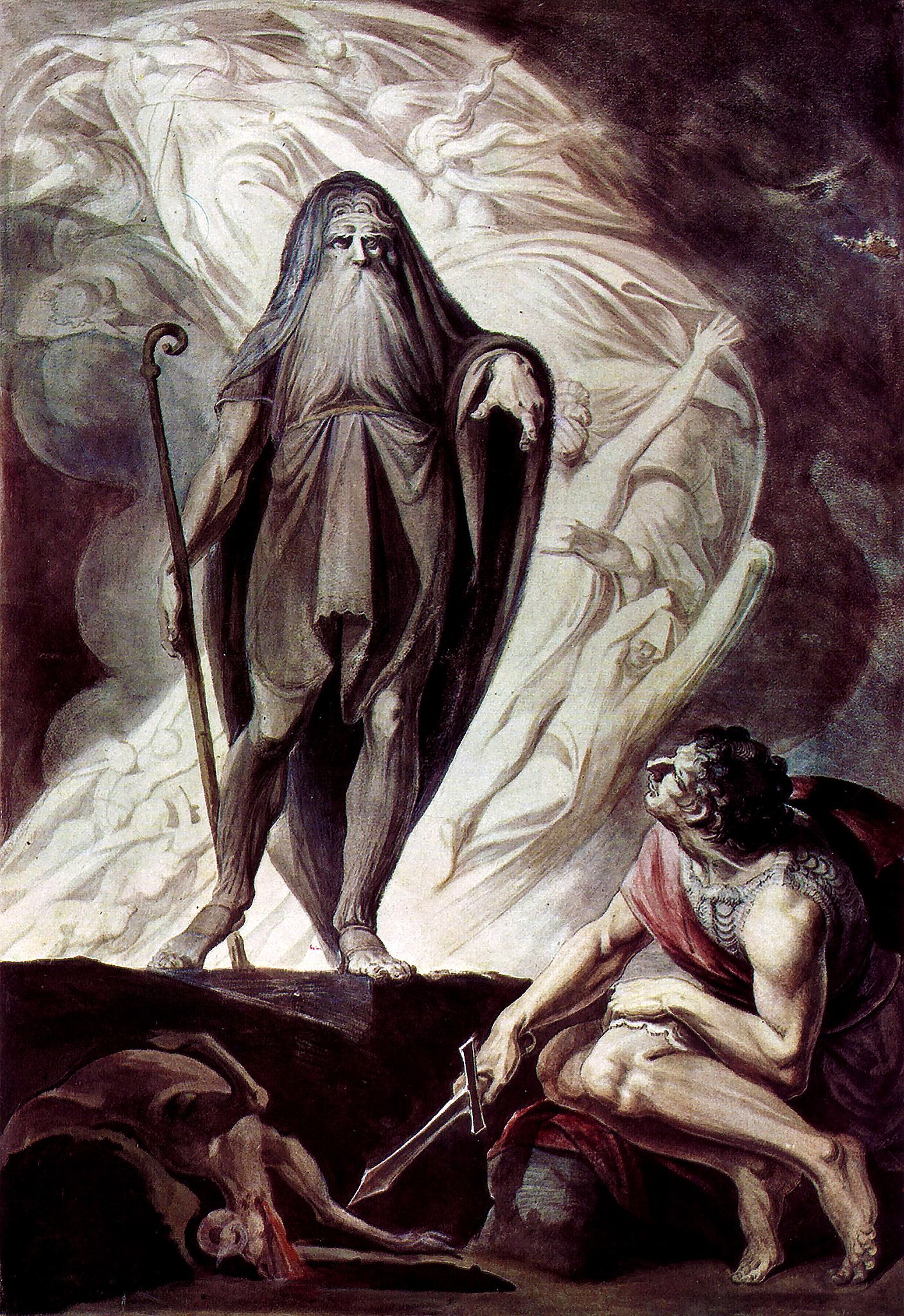
Tiresias appears to Ulysses during the Sacrificing
Now this is quite interesting. The knife used by Ulysses bears the resemblance of a cross. Then again he did sacrifice a lamb in order to summon The Blind Seer Tiresias. This scene is the most important scene of the Odyssey (aside from the end). Here Ulysses learns of his mother's death and the fate that has befallen his son and wife. With the help of this seer Ulysses was able to make some minor process or other in returning home (thought after this incident he was forced to take a 10 year detour in an island full of chicks).
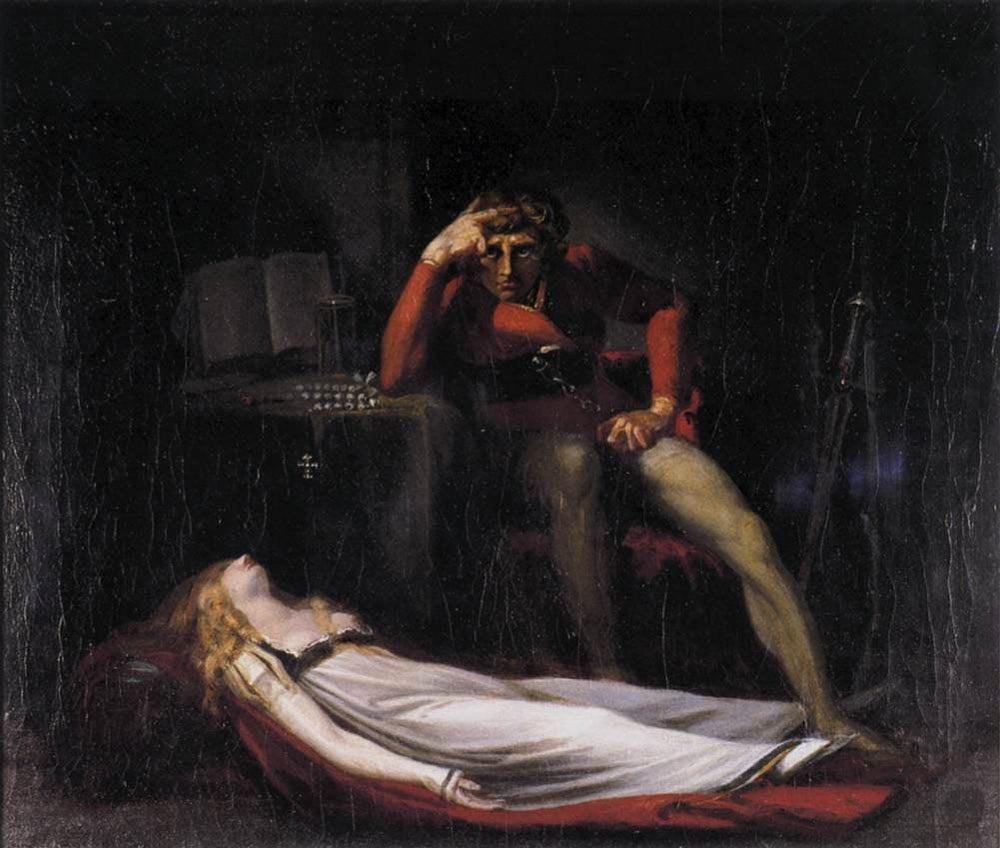
Ezzelin and Meduna
Lord Byron spent many hours wondering who the hell Ezzelin and Meduna were. So if you ask me who they where the answer lies is beyond my comprehension. They are fictional characters that Fusseli created for his painting. anyhow, the subject matter is the death of Ezzelin. Meduna is seems to be grieving over her. His grief is not that of a catastrophe stricken lover. Nope, He seems more like a guilty man meditation upon his own salvation. In a corner on can see a rosary, an open bible and an hourglass. The claymore behind him smells of death. By adding these symbols one can conclude that Meduna is praying (rosary) to god (the bible+cross) that his time in earth (hourglass) be taken away (by the sword). Perhaps he wishes to kill himself.
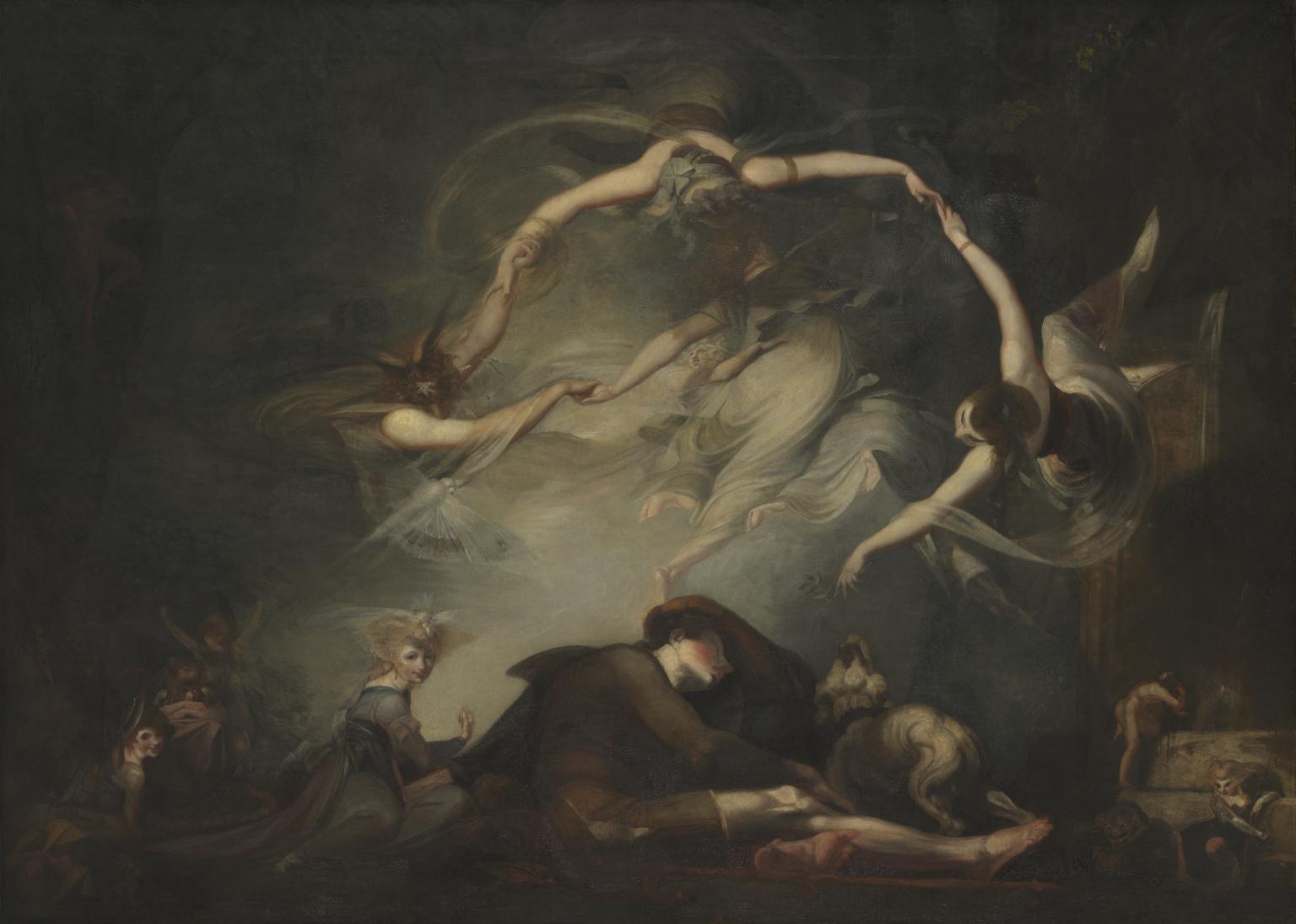
The Shepherd's Dream 1793
Now isn't this a lovely dream. Above we see four fairies hovering over the shepherd. It is quite the interesting pastoral dream. Quite creepy along along the edges. What this is about is beyond me. It has far too many odd references for me to make much sense. Perhaps he is mad or alone. Maybe he wishes to see a lady.

Lady Macbeth
The Lady Macbeth has quite the kill face. She really wanted to be queen. She plays a strong female role in the story of Macbeth. Macbeth led by superstition (or the prophecy of the 3 witches) was easily manipulated by his wife into killing his friend. In this scene Fuseli shows Macbeth cowering before his wife. She urges him forward.All he has to do i walk stealthily and slay his friend with two daggers (if you ask me one is more than enough to kill someone while they sleep).
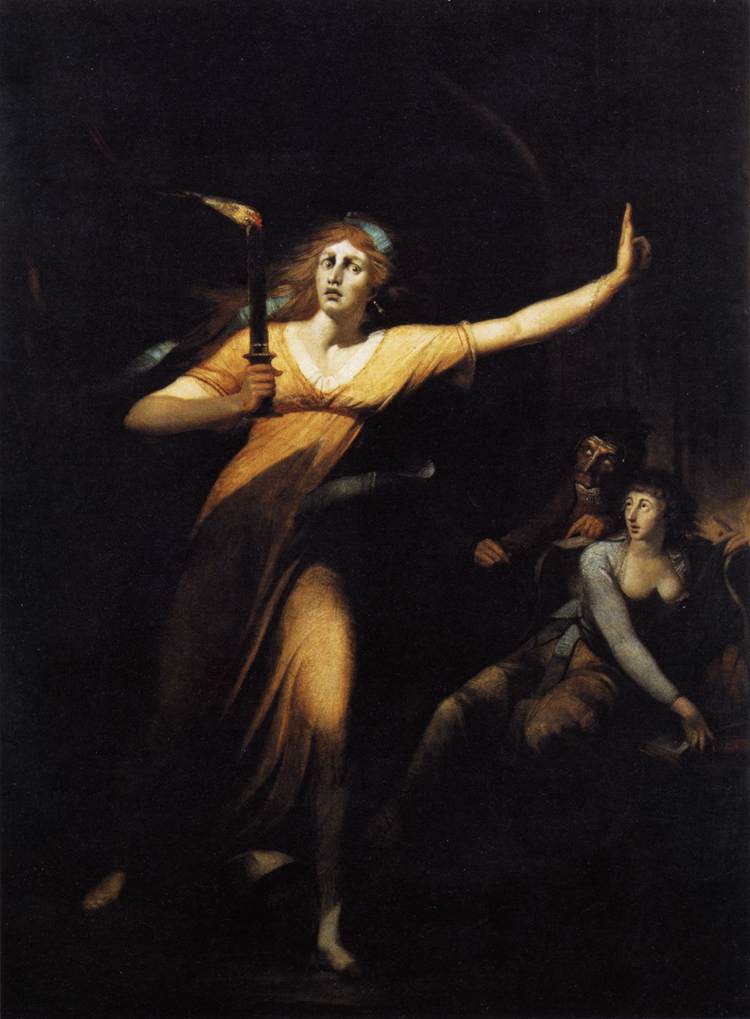
Lady Macbeth 2
The Narrative of Lady Macbeth continues. Truly she is a fascinating Shakespeare character. Now that she was queen she could not live with the guilt of the sins she had committed. It was thanks to her that Macbeth became a murderous monster. it is this sole thought that made lady Macbeth feel that she was responsible for all those that her husband killed. This guilt drove her to insanity. In this painting Lady Macbeth is walking blindly with a torch before her. She is trying to bring sanity back to her life but as Fuseli shows her mind lies in an ocean of darkness.
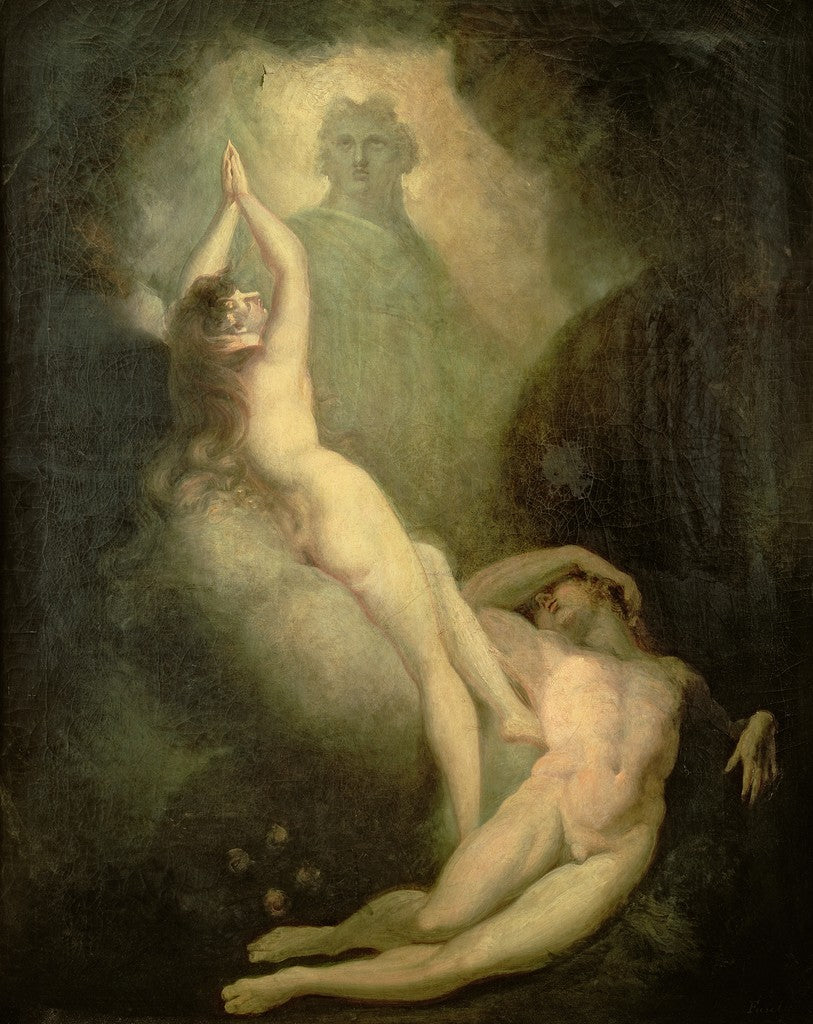
The Creation of Eve
The creation of Eve is truly quite interesting. The figure of God is quite creepy. She is holding up her hands in prayer to her creator. Adam lies in a reclined sleeping position. She truly does like she just came out of his side.

The Inquisition
This is another one of Fuseli's biblical themed paintings. In those days, the Inquisition although declining had taken a twisted turn for the worst in Spain. Intellectuals saw the Inquisition as a menacing shadow over process. Here the Inquisition lies menacing over classical art. She is bearing the torch of vengeance over classical art. Behind her a church man coward in fear. Truly the Inquisition is a fearsome enemy.

The weird sisters
The above old maidens are the witches that Macbeth visited. They where the ones that told Macbeth that he would become a great king and that man not born of a woman would slay him. The way they behave and point reminds me of the furies and the fates. They are in essence the classical trio. They point Macbeth to his fate (or death). A keen observed would notice on top of the finger of the witch at the background there is a little skull with bat wings and a crown.It seems that his flight toward fame and kingship was to seal his own demise.
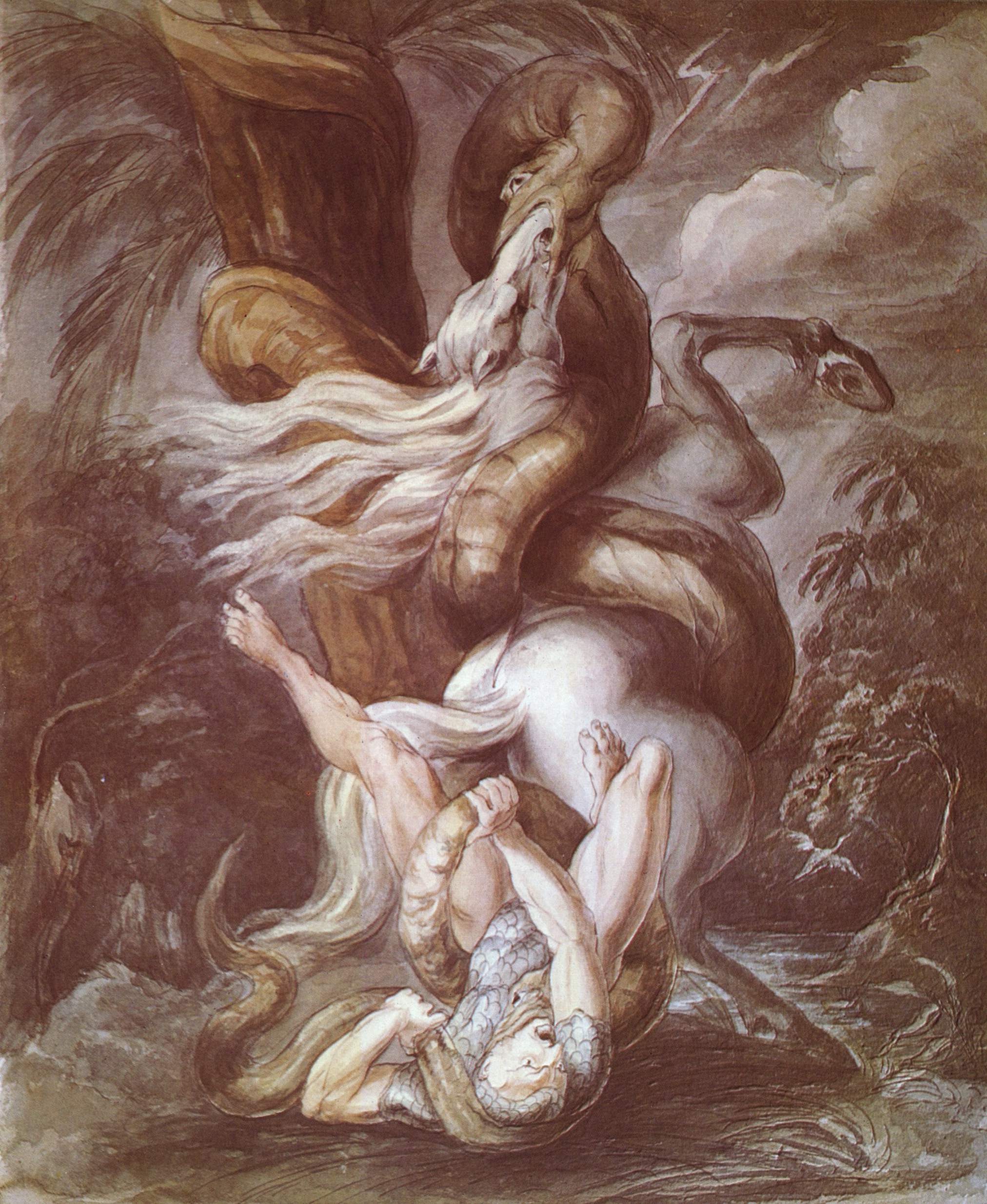
Horseman Attacked by a Giant Snake
The Following Fuseli painting is truly a work of art. This is a reworking of the Laocoon Group. In this painting we see a man attacked by a giant snake. It is a rather interesting study of bodily contortions. Fuseli was always experimenting with composition (arrangement of characters in a painting). I guess this is another one of his mad experiments.
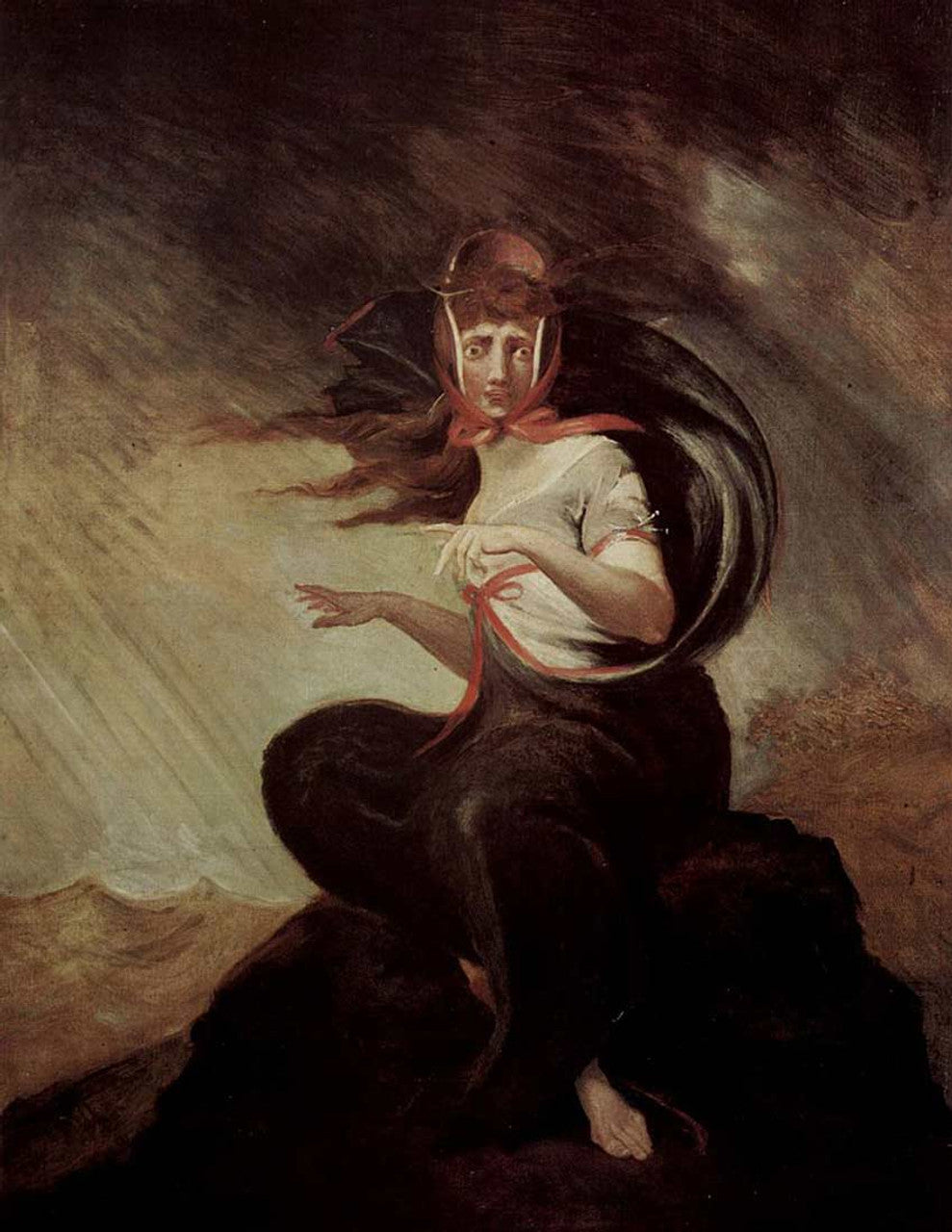
A Mad Woman
A proper name for a proper mad woman. She seems to be pointing at something or other. She does seem to have a lovely arrangement about her. Other than the fact that she is insane there is really nothing else remarkable about this composition experiment.
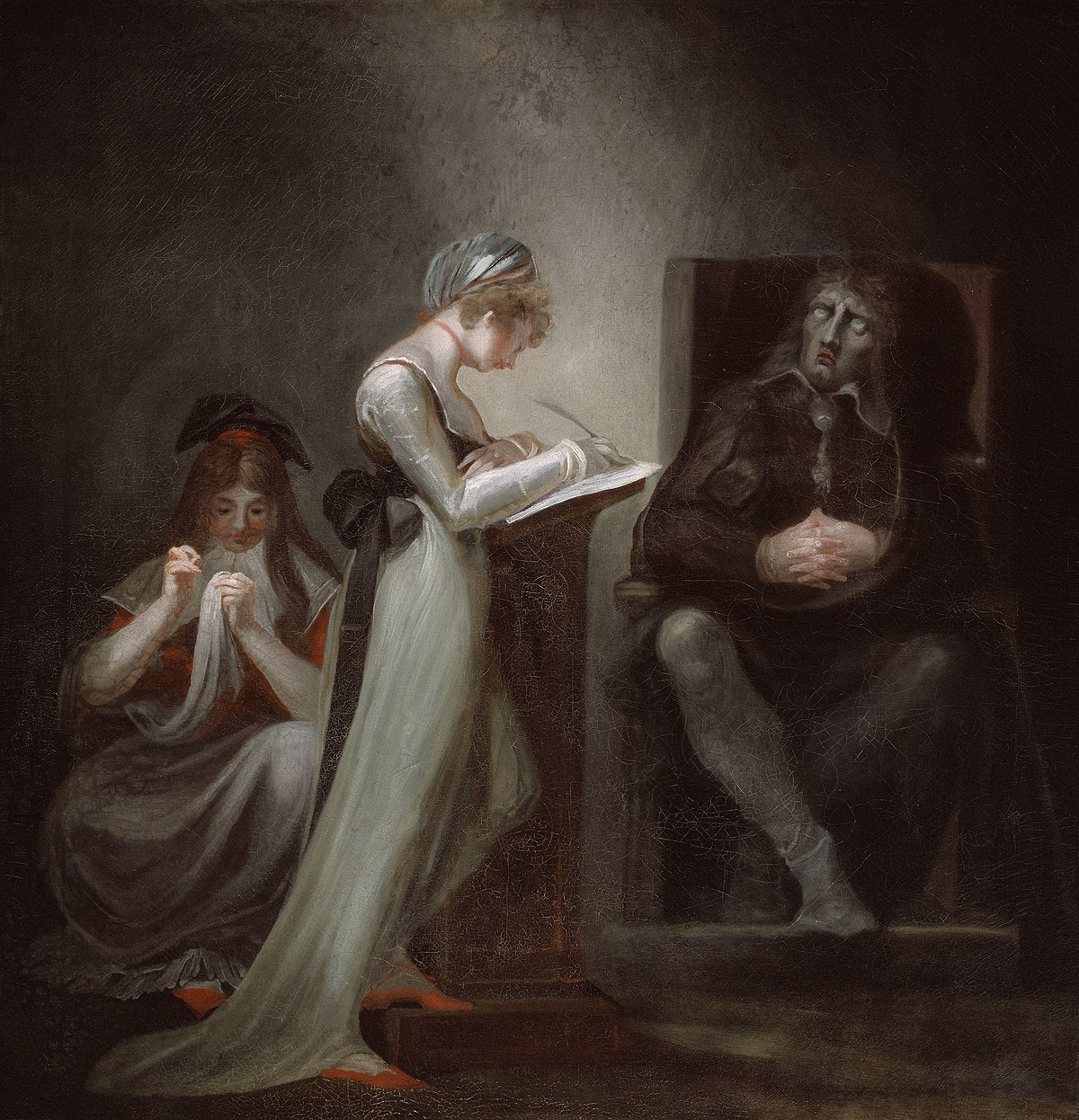
The Lives of the Poet or Milton's Daughters
I sometime wonder... was John Milton insane? Fuseli seems to think so too. Here we see the poet in a strange insane revery. He does not seem to be aware that his daughters are next to him. One is even writing whatever insanity seems to cross by his mind. Frankly, there must be something wrong with a person that described Sin in such a unique disgusting fashion.





















